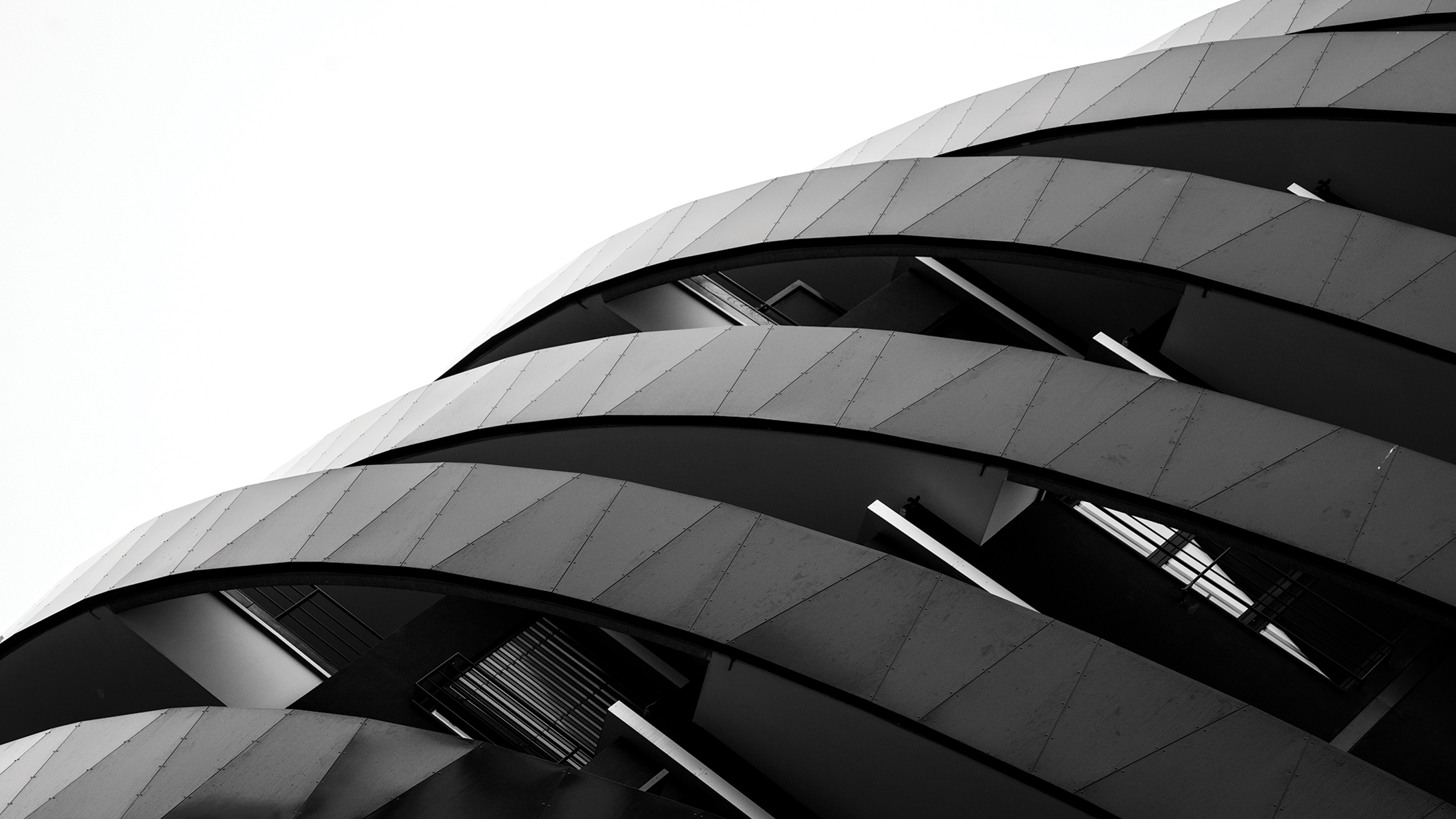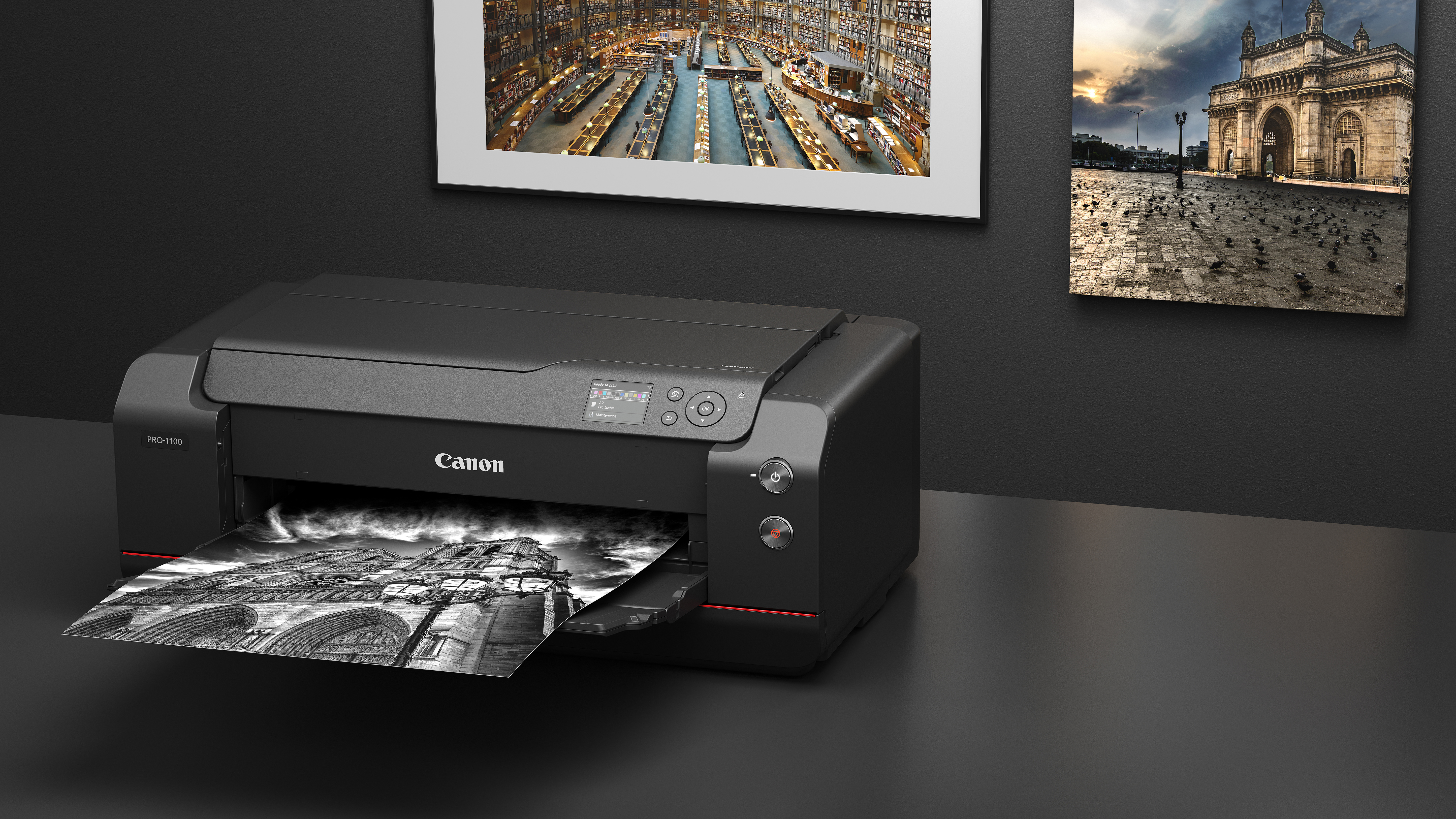
Canon has announced a new flagship product, the Canon ImagePrograf Pro-1100 – an update to the nearly decade-old ImagePrograf Pro-1000 professional printer aimed at studios, professional photographers and businesses.
It boasts the exact same physical dimensions (723 x 435 x 285mm) and weight (32.4kg) as its predecessor, but don;t be fooled by its similar appearance; inside it's brimming with new exciting tech, such as 5G WiFi.
The Pro-1100 can print at sizes up to A2+ or 17". However, using paper roll, the Pro-1100 can now make prints well over twice as wide as the Pro-1000 could; while its predecessor could produce panoramas up to 1.2m wide, the Pro-1100 can create panos up to 3.27m.
The ImagePrograf Pro-1100 is designed for high yields using a wide range of 11 inks and Chroma Optimizer. "By being applied over the printed image to cover the bumps between ink droplets, Chroma Optimizer levels the ink droplet height in order to enhance the glossiness and flatten the print surface, as well as expanding color gamut," explains Canon.
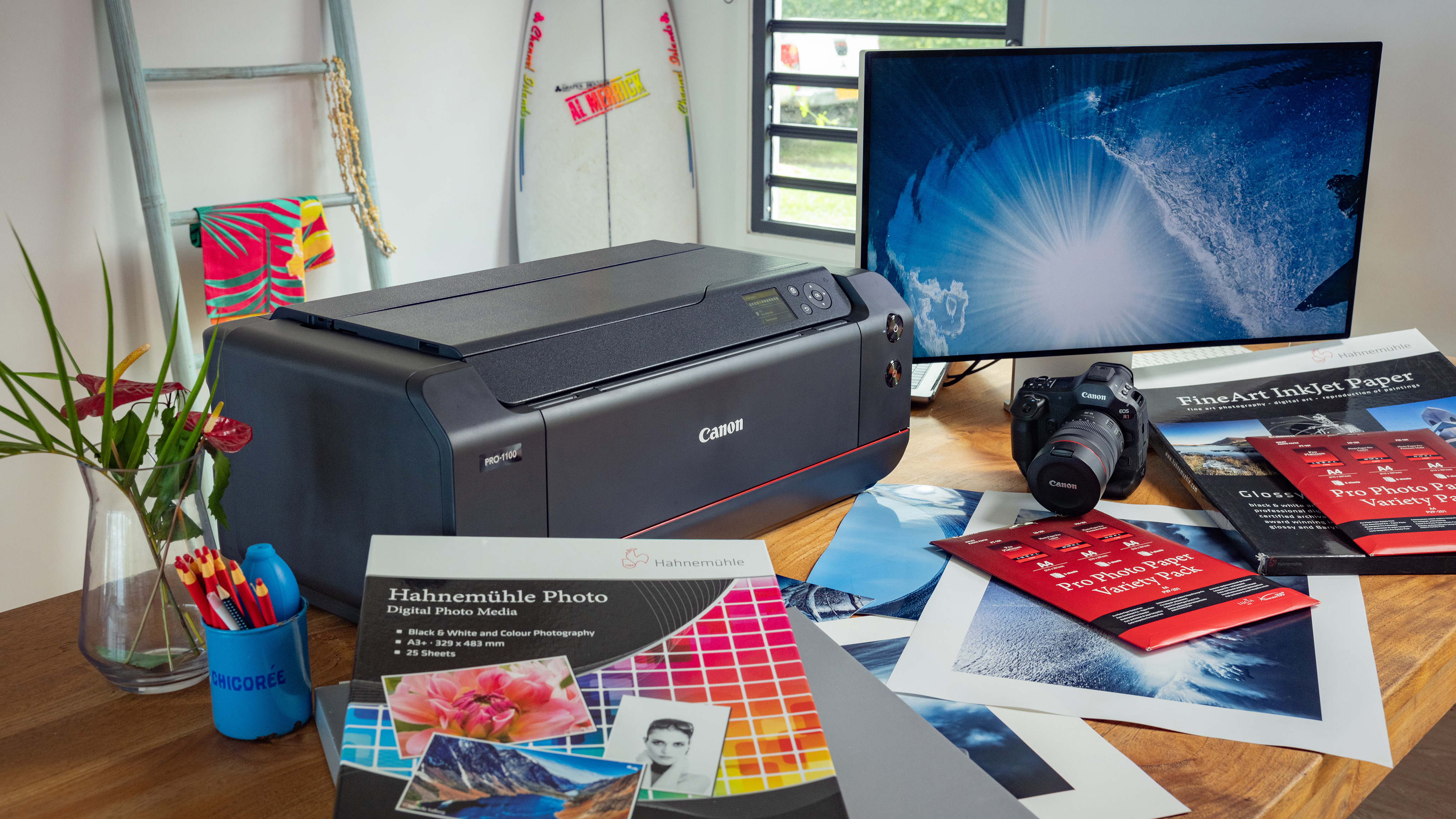
Like its predecessor, the Pro-1100 takes 11 inks – each of which has a large 80ml capacity, though they are new PFI-41000 inks.
Dye is good for speed, color and vibrancy, but Canon says the color can break down as quickly as within seven years. The Pro-1100 instead uses pigment ink, which is better for contrast, black and white prints, and also longevity. Canon claims that its prints have a lightfastness of 200 years (or 180 years on fine art paper), which is a significant bump up from the conventional 60 years.
The new Lucia Pro II inks are also said to improve dark colors as well as black density on art paper, by densely arranging coloring materials to achieve rich colors and improving fine gradation in dark areas.
Get the Digital Camera World Newsletter
The best camera deals, reviews, product advice, and unmissable photography news, direct to your inbox!
The ink 'wettability' is also increased for a better coverage of black pigment particles, and pigments have a lower reflectance to improve black density as well. This also helps to cut down reflections that cause bronzing: a detrimental effect where prints can look metallic.
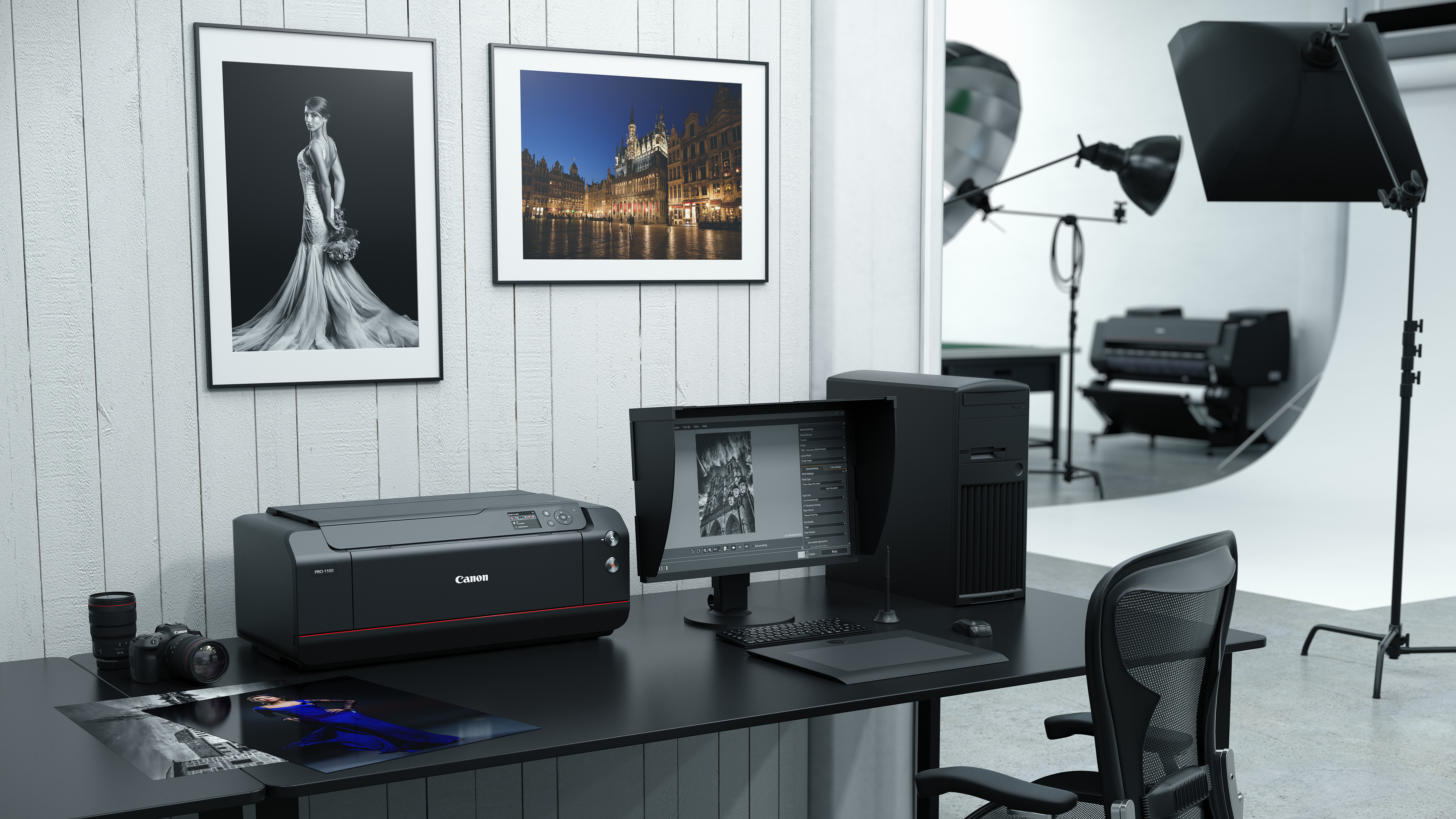
The new inks also have wax added to them, to make them more scratch resistant on glossy paper. This should cut down on waste and also save time from having to make another print, which could take several minutes. Canon classes the Pro-1100 as a medium yield printer, only exceeded by Canon printers with larger MegaTanks.
You can of course use Canon's Auto Replenishment Service to reorder ink automatically when you’re running low. This is set to 10% by default, but can be customized for each ink – handy if you know you're going to be using more of some colors than others.
Speaking of print times, the Pro-1100 uses the same PF-10 head as its predecessor so its speed is unchanged. An A2 (LU-101 color) print should take about 3 minutes 35 secs, while an A2 (PT-101 color or mono) print should take about 6 minutes.
Borderless printing uses a vacuum system and starts at A2 size, which is a bit limiting if you want to print borderless at smaller sizes.
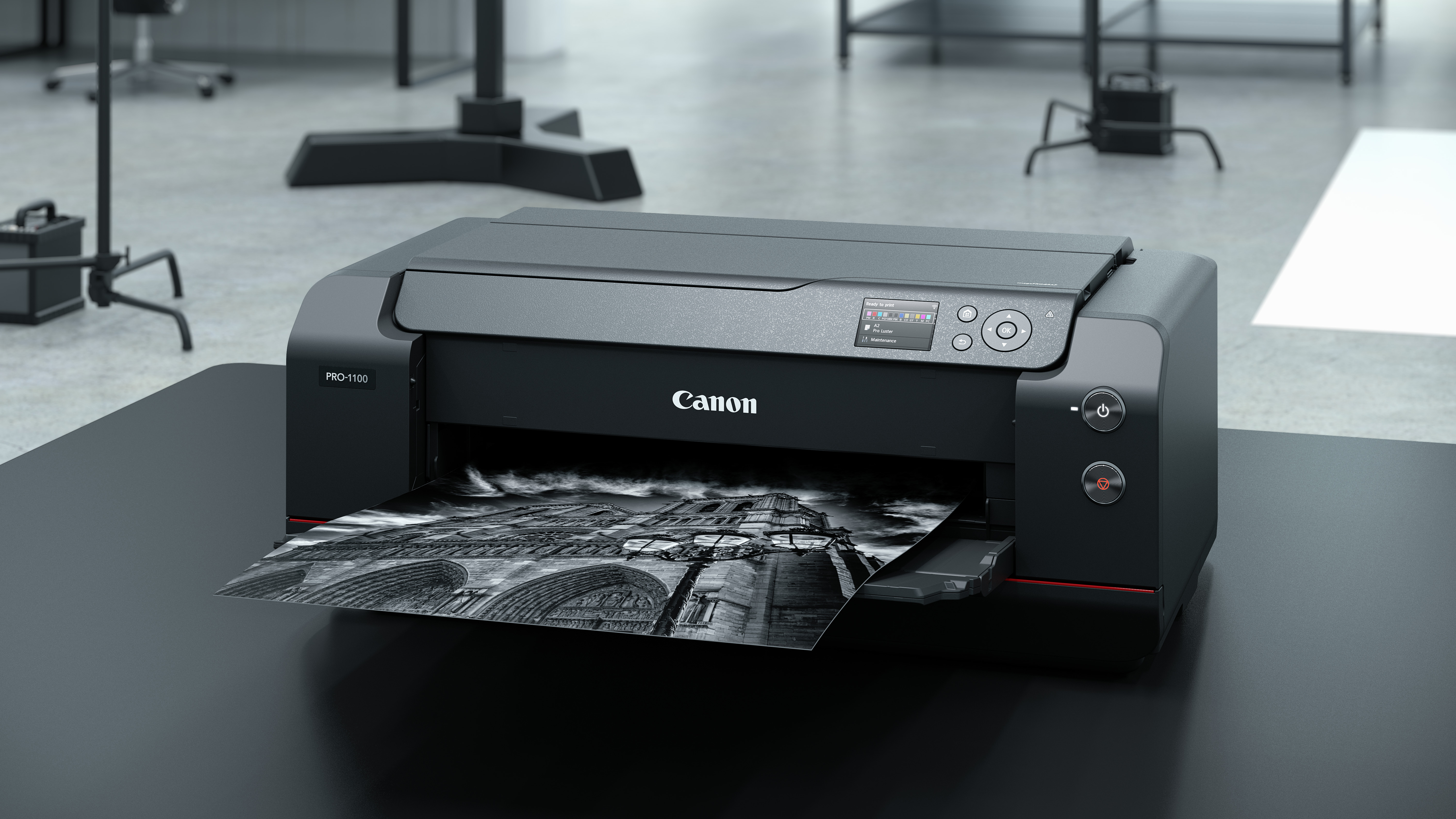
It's not just the printer itself that has been overhauled, either. There are some handy features added to Canon's Professional Print & Layout software, including improvements to Crystal Fidelity – which can now extract extra information from Canon cameras such as the EOS R5 and R5 Mark II, for proofing in certain environments or to prevent highlights blowing out under harsh exhibition lighting.
There's also a new Black & White print mode, the Chrome Optimizer now has a trio of settings (On, Off or Partial) and it supports a host of new print sizes ranging from 7x10" up to 12x12".
Canon also recognizes that users might not want to jump between software programs, so its drivers can also be picked up in Adobe packages such as Photoshop CC and Lightroom Classic CC to streamline the printing process.
Another new neat addition is the Custom Media Registration Flow. This gives users more options for how long the Pro-1100 holds onto paper when drying, as well as the height of the printer head.
Sales for the Canon ImagePrograf Pro-1100 are due to start in September at a price of £1,099.99 (US and Australian pricing to be confirmed).
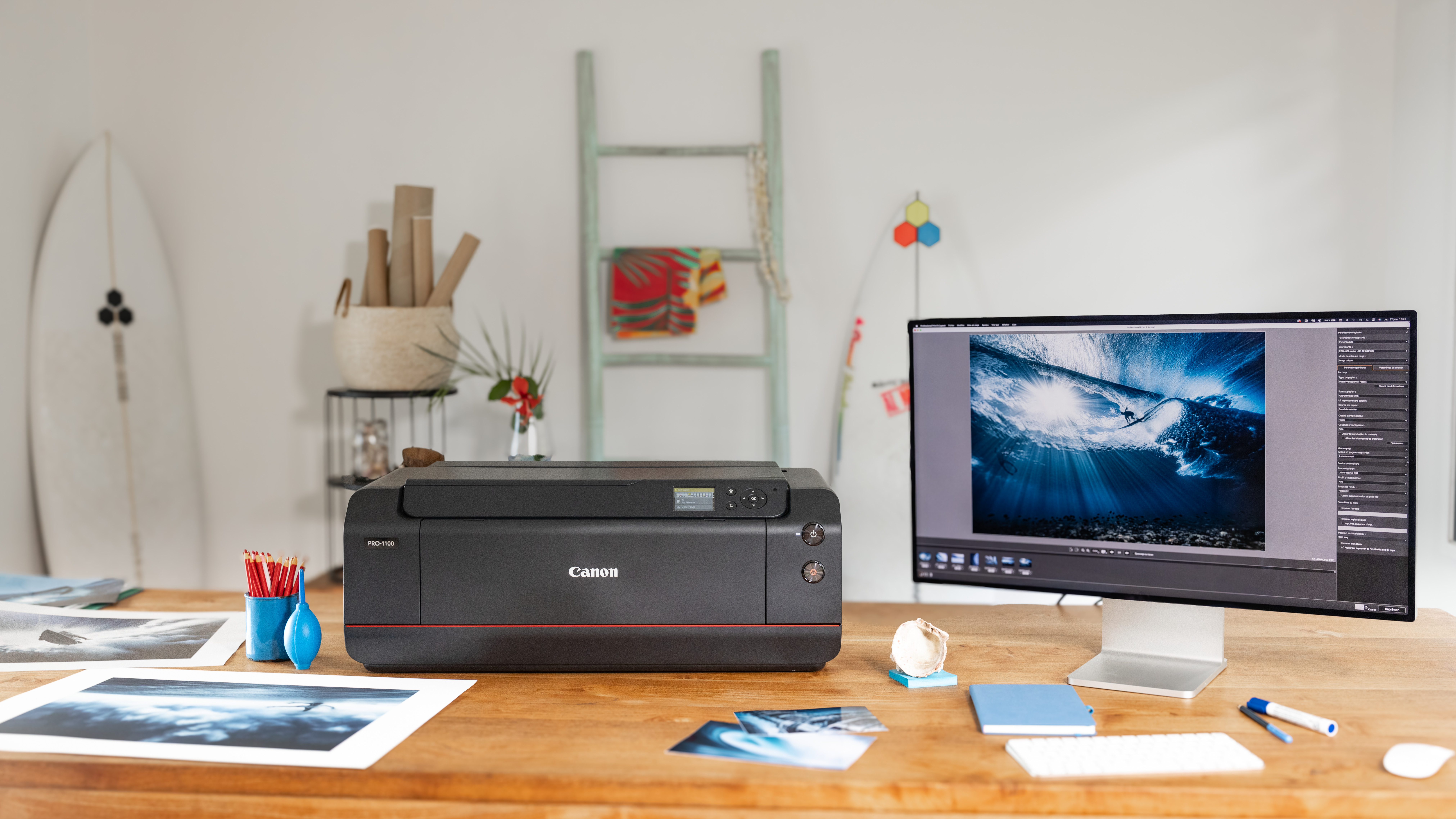
You might be interested in the best photo printers and the best large format printers – or alternatively, check out the best portable printers.

Deputy Editor on PhotoPlus: The Canon Magazine, Dan also brings his technical wizardry and editing skills to Digital Camera World. He has been writing about all aspects of photography for over 10 years, having previously served as technical writer and technical editor for Practical Photography magazine, as well as Photoshop editor on Digital Photo.
Dan is an Adobe-certified Photoshop guru, making him officially a beast at post-processing – so he’s the perfect person to share tips and tricks both in-camera and in post. Able to shoot all genres, Dan provides news, techniques and tutorials on everything from portraits and landscapes to macro and wildlife, helping photographers get the most out of their cameras, lenses, filters, lighting, tripods, and, of course, editing software.
